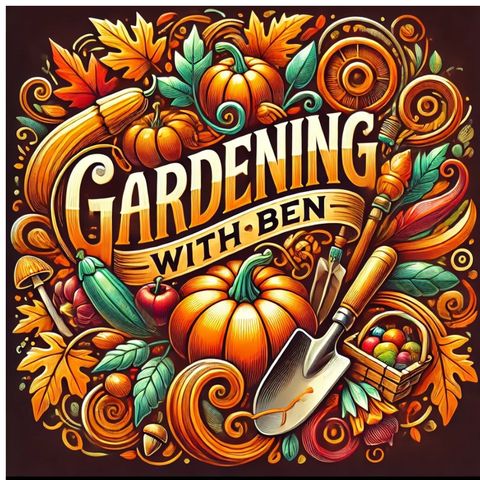"Two Action-Packed Days at the Allotment Garden"

Scarica e ascolta ovunque
Scarica i tuoi episodi preferiti e goditi l'ascolto, ovunque tu sia! Iscriviti o accedi ora per ascoltare offline.
Descrizione
Welcome to "Two Action-Packed Days at the Allotment Garden," where we delve into the exciting and productive tasks that have kept us busy over the past 48 hours. This episode...
mostra di piùDay One: Planting and Preparation
**1. Early Morning Start:** We kicked off the first day with an early morning start, taking advantage of the cool temperatures to get a head start on our tasks. The calm morning hours are perfect for planting and soil preparation, providing a serene environment to focus on detailed work.
**2. Planting Summer Crops:** Our primary focus was planting warm-season crops such as tomatoes, peppers, cucumbers, and beans. These crops thrive in the warmer temperatures and longer daylight hours of late spring and early summer. We provided detailed planting techniques, including the ideal depth, spacing, and soil conditions for each crop.
**3. Soil Health:** We emphasized the importance of soil health by adding compost and organic matter to enrich the soil. Regular soil testing helps determine pH and nutrient levels, ensuring optimal growing conditions. We discussed the benefits of using organic fertilizers and the importance of maintaining a balanced soil ecosystem.
**4. Watering Techniques:** Proper watering is crucial, especially during dry spells. We demonstrated efficient watering methods, such as deep watering early in the morning to minimize evaporation and promote strong root growth. Installing a drip irrigation system can further enhance watering efficiency.
Day Two: Maintenance and Harvesting
**1. Weeding and Mulching:** The second day focused on maintenance tasks, starting with thorough weeding to prevent competition for nutrients and water. We applied a thick layer of organic mulch around the plants to retain soil moisture, suppress weeds, and regulate soil temperature. Mulching also adds organic matter to the soil as it decomposes, improving overall soil health.
**2. Pruning and Deadheading:** Regular pruning and deadheading help maintain plant health and encourage new growth. We pruned fruit trees, shrubs, and flowering plants to remove dead or diseased wood and improve air circulation. Deadheading spent flowers promotes further blooming and keeps the garden looking tidy.
**3. Pest and Disease Management:** We monitored the garden for pests and diseases, addressing any issues promptly. Organic pest control methods, such as introducing beneficial insects and using neem oil, were discussed. Good garden hygiene, including proper spacing and crop rotation, helps prevent disease outbreaks.
**4. Harvesting:** The highlight of the day was harvesting ripe produce. We provided tips on the best techniques for picking and storing fruits and vegetables to maintain their freshness and flavor. Regular harvesting encourages plants to produce more, ensuring a continuous supply of fresh produce.
Listener Questions and Success Stories
We love engaging with our listeners! In this episode, we feature your questions about efficient gardening practices and share success stories from fellow gardeners. Whether you need advice on specific challenges or want to celebrate your achievements, this segment is all about community and learning from each other.
Conclusion
"Two Action-Packed Days at the Allotment Garden" is your comprehensive guide to making the most of your gardening time. With expert tips, practical advice, and inspiring stories, this episode will help you ensure a productive and beautiful garden. Tune in, subscribe, and join us as we explore the joys and challenges of allotment gardening. Happy gardening!
Informazioni
Copyright 2024 - Spreaker Inc. an iHeartMedia Company

Commenti